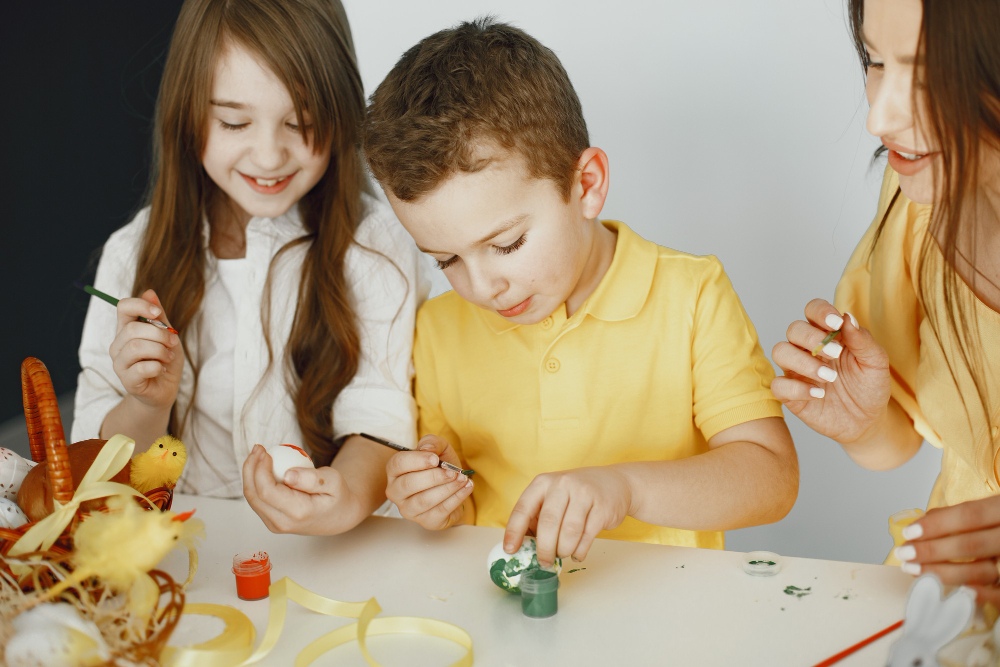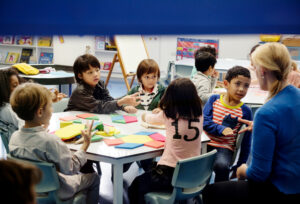Introduction: Why Fun Activities Matter for Kids
Children are naturally curious and full of energy. While structured learning is important, fun activities play a huge role in their development. The best international schools in Bangalore focus on creating engaging activities that help kids build creativity, enhance social skills, and develop problem-solving abilities — all while having a great time! From DIY crafts to exciting outdoor adventures, this list of 10 fun activities for kids ensures they stay engaged, active, and always learning.
Let’s explore some exciting ways to keep children entertained while nurturing their curiosity and imagination.
10 Exciting and Fun Activities for Kids
1. DIY Craft Projects – Unleashing Creativity
Crafting is a wonderful way for kids to express their creativity while improving hand-eye coordination and fine motor skills.
Some fun and easy crafts include:
- Paper plate masks: Kids can create their own superhero or animal masks.
- Handprint art: A fun way to make personalized greeting cards or wall decor.
- Recycled craft challenge: Encourage kids to make something unique using old newspapers, cardboard, and bottle caps.
Craft activities boost creativity, patience, and problem-solving skills, making them a favorite among kids and parents alike.
2. Treasure Hunt – The Ultimate Adventure Game
A treasure hunt is an exciting indoor or outdoor game that improves children’s problem-solving abilities.
How to play:
- Hide objects around the house or garden and create clues.
- Give kids a map or riddle-based hints to find the hidden treasure.
- Add a fun prize at the end, like stickers or a homemade medal.
This game helps kids think critically, work in teams, and improve their observation skills.
3. Storytelling Sessions – Expanding Imagination
Storytelling or sometimes story writing is a timeless activity that helps children develop language skills, creativity, and emotional intelligence.
Some fun storytelling variations:
- Story Cubes: Roll dice with pictures and let kids create a story based on the images.
- Story Chain: One person starts a story, and each participant adds a sentence.
- Act-It-Out Stories: Kids act out different characters while narrating the story.
Encouraging children to create their own stories builds confidence and communication skills.
4. Science Experiments – Learning Through Fun
Science activities bring learning to life and spark curiosity in children. Using technology in classroom experiments makes learning even more fun and interactive.:
- Baking soda volcano: Mix baking soda and vinegar to create a fun volcanic eruption.
- Magic milk experiment: Add food coloring to milk and use soap to see how colors swirl.
- DIY slime: Mix glue, water, and borax to make stretchy, fun slime.
These hands-on activities make science exciting and memorable for kids.
5. Outdoor Obstacle Course – Active and Engaging
Physical activities are essential for children’s health and motor skills development. An outdoor obstacle course combines fun with fitness.
Create an obstacle course using:
- Hula hoops to jump through
- Rope or tape as a balance beam
- Small cones to zig-zag through
- A final sprint to the finish line
Obstacle courses encourage physical activity, teamwork, and coordination skills.
6. Cooking Together – Fun in the Kitchen
Cooking is a fun way to teach kids math, science, and life skills.
Some simple and safe recipes for kids:
- Fruit skewers: Kids can arrange colorful fruits on skewers.
- DIY sandwiches: Let children pick their own fillings and create fun shapes.
- Mini pizza making: Provide toppings and let kids decorate their own mini pizzas.
Cooking together encourages independence, creativity, and healthy eating habits.
7. Puzzle Challenges – Boosting Brain Power
Puzzles are great for critical thinking and problem-solving.
Engaging puzzle ideas:
- Jigsaw puzzles – Improve concentration and patience.
- Sudoku or number puzzles – Strengthen math skills.
- Word search or crossword games – Expand vocabulary and spelling skills.
Puzzles challenge young minds and build perseverance and logic.
8. Nature Walks and Scavenger Hunts
Spending time in nature reduces stress and boosts curiosity.
How to make nature walks more fun:
- Give kids a scavenger hunt list (e.g., find a red leaf, a bird, or a smooth rock).
- Let them sketch things they see in a nature journal.
- Encourage kids to collect leaves or flowers and create artwork at home.
Nature walks help children appreciate the environment and develop observational skills.
9. Shadow Puppet Show – Bringing Stories to Life
A shadow puppet show is a fun and easy way to tell stories using just hands and a flashlight.
Steps to create a shadow show:
- Cut out paper figures of animals, people, or shapes.
- Use a lamp or flashlight in a dark room to cast shadows on the wall.
- Let kids perform a mini-theater play using their puppets.
This activity enhances storytelling skills and hand-eye coordination.
10. Music and Dance Party – Express Through Movement
Music and dance activities promote self-expression and coordination.
Fun music activities:
- Freeze dance: Stop the music suddenly and freeze in funny poses.
- DIY musical instruments: Make maracas with rice and plastic bottles.
- Sing-along sessions: Let kids sing their favorite songs and perform.
Music and movement improve rhythm, confidence, and social interaction skills.
Conclusion
Fun activities for kids aren’t just about entertainment — they also encourage creativity, curiosity, and essential life skills. Whether it’s crafting, outdoor games, or storytelling, these activities help children learn while having fun. The Best schools in Bangalore incorporate such engaging activities to make everyday learning more meaningful. The best part? These activities create lasting memories and foster a lifelong love for learning.
FAQs
Fun activities help children develop creativity, problem-solving skills, social interaction, and physical coordination.
Some great indoor activities include DIY crafts, storytelling, puzzles, cooking, and shadow puppet shows.
Outdoor activities promote physical health, teamwork, and exploration. Games like obstacle courses and nature walks encourage active learning.
Consider your child’s interests and age. Mix creative, physical, and educational activities to keep them engaged.
Yes! Many activities, like science experiments and puzzles, make learning enjoyable and interactive.







